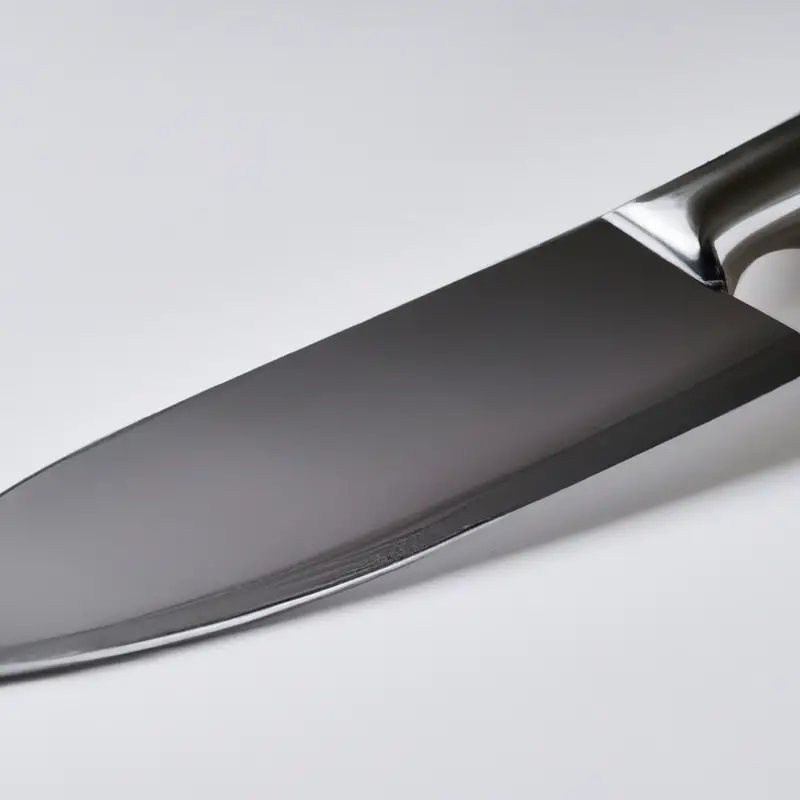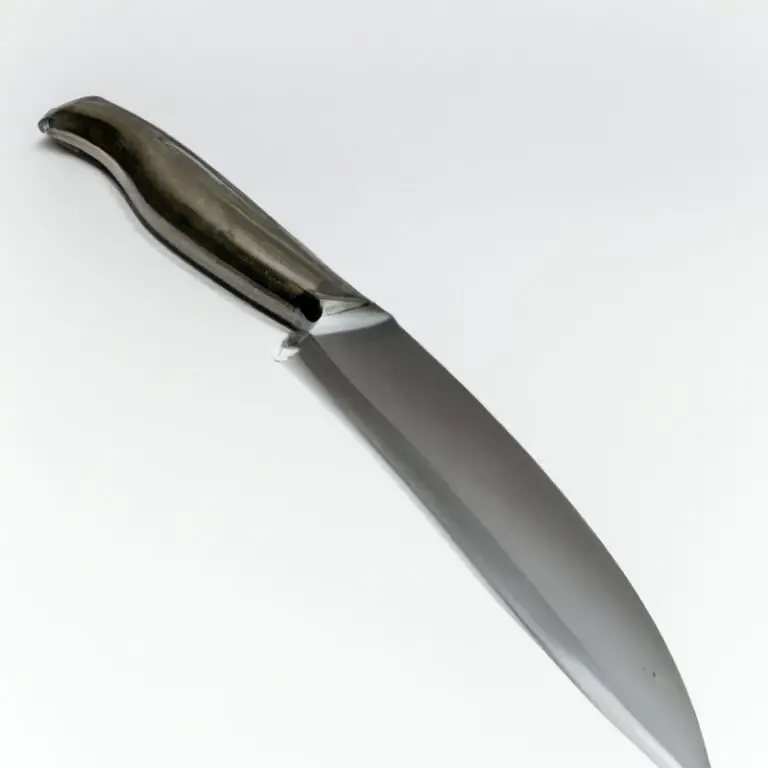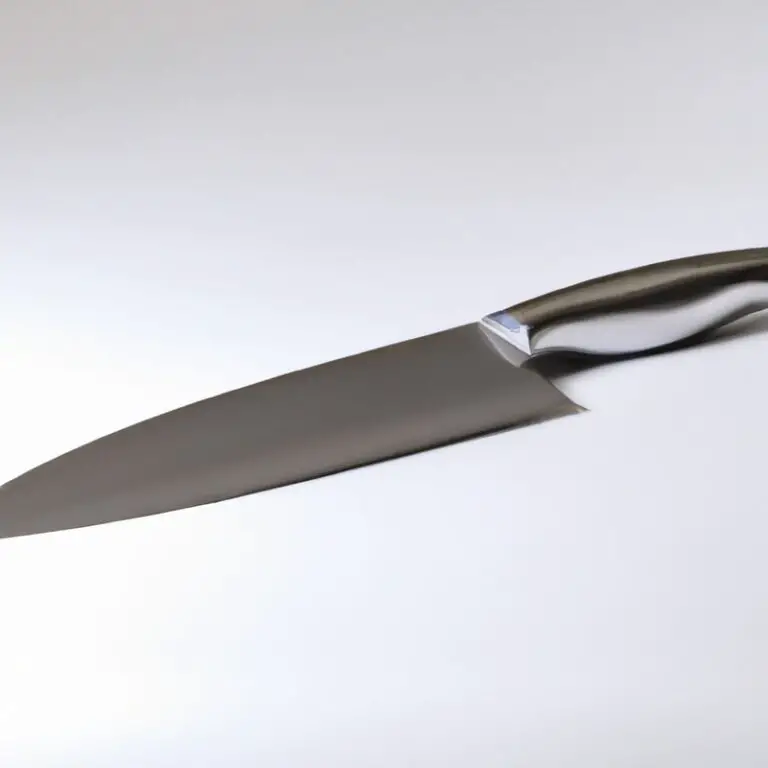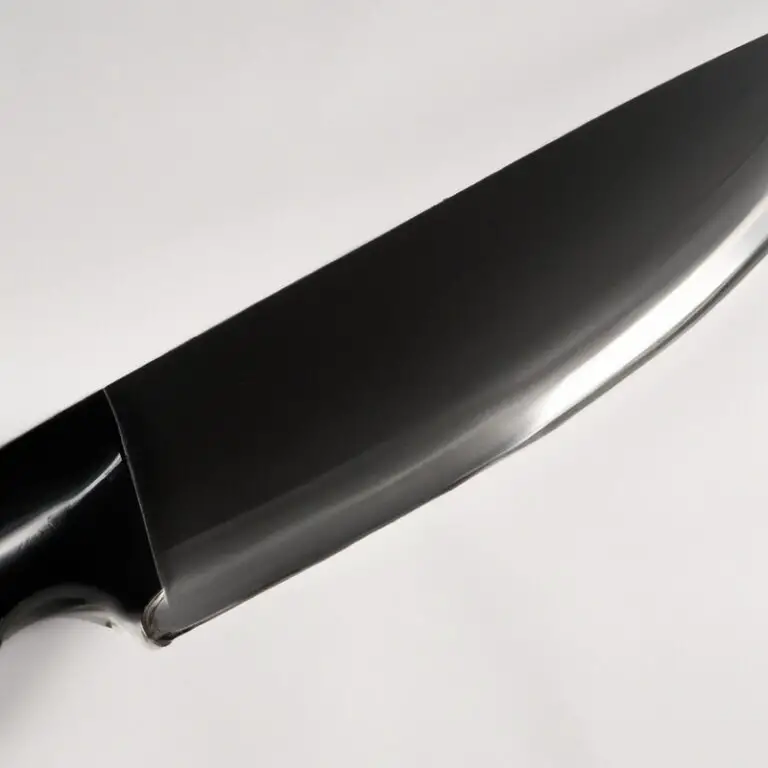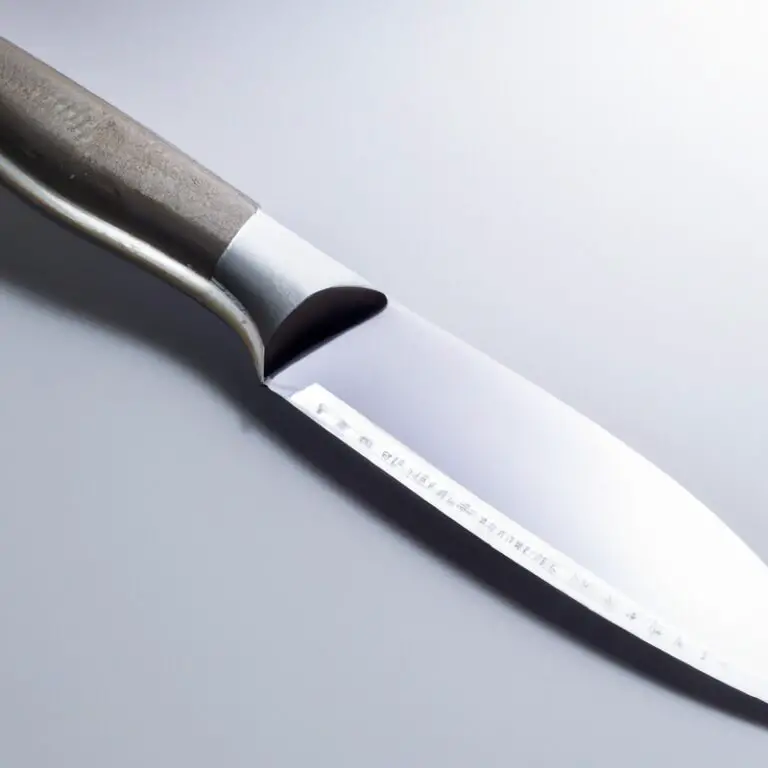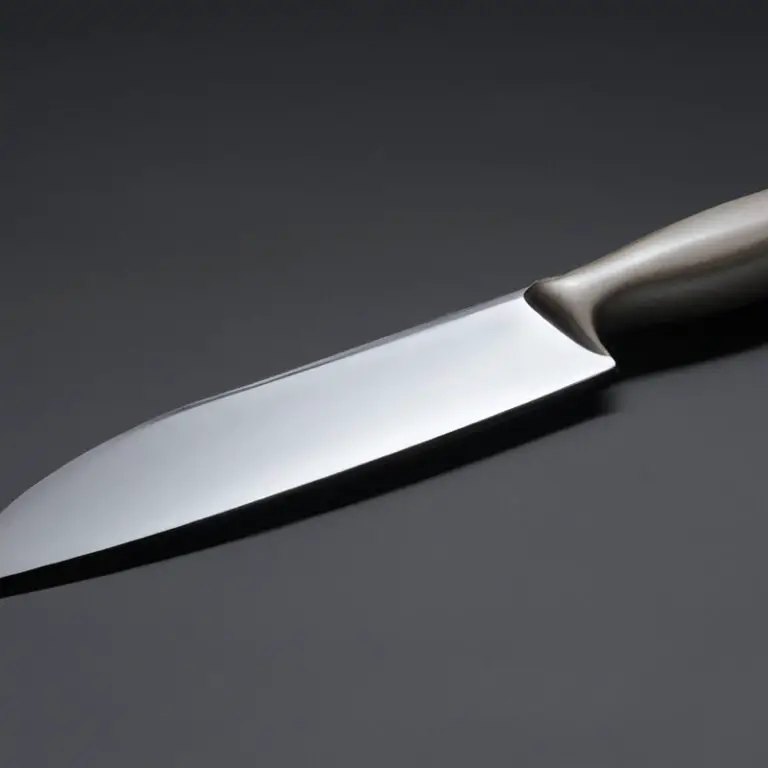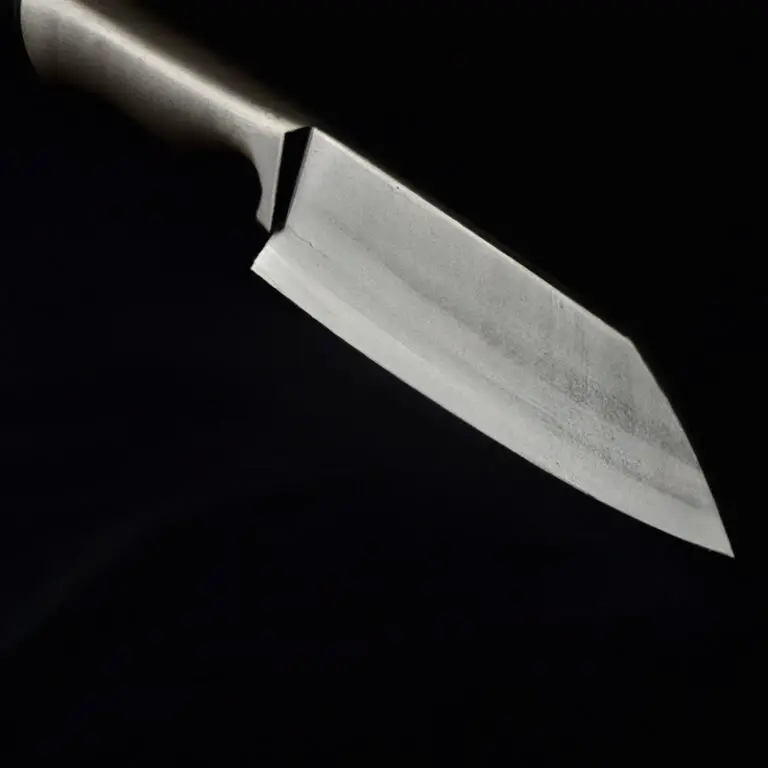Rolling And Securing a Santoku Knife In a Knife Roll: Tips And Tricks
Key Takeaways:
- Properly rolling and securing your Santoku knife in a knife roll helps to ensure its longevity and safety during transportation.
- Avoid overstuffing the knife roll to prevent damage to your Santoku knife’s blade and edge.
- When securing your Santoku knife, be mindful of the blade’s direction and placement to prevent accidental cuts or injury.
- Regular maintenance and cleaning of your Santoku knife will help to prolong its lifespan and ensure its performance.
Are you a chef, cook, or culinary enthusiast who loves using a Santoku knife in the kitchen? Then, rolling and securing it in a knife roll is a skill you need to learn.
Not only does it protect your precious knife from damage during transportation, but it also ensures your safety when you reach for it in the roll.
In this article, I’ll guide you through the essential tools and materials required for rolling and securing your Santoku knife, the step-by-step process, tips for maintaining the knife’s sharpness, and precautions to take when handling it. Plus, I’ll share some insight on choosing the right knife roll for your needs.
| Rolling a Santoku knife | Securing a Santoku knife | |
|---|---|---|
| Pros |
|
|
| Cons |
|
|
What is a Santoku knife and why is it important to know how to roll and secure it in a knife roll?
A Santoku knife is a Japanese-style general-purpose kitchen knife that is shorter and lighter than a traditional Western chef’s knife. It is known for its distinctive flat edge and round tip, which allows for rock chopping and slicing.
Knowing how to roll and secure a Santoku knife in a knife roll is crucial for chefs, cooks, and culinary enthusiasts alike.
It not only protects the knife from damage during transportation but also ensures the safety of individuals handling the knife. A properly rolled and secured Santoku knife will prevent accidents and injuries, as well as protect the sharp edge of the knife.
It also makes it easier to transport the knife from one location to another without damaging it.
Essential tools and materials required for rolling and securing a Santoku knife in a knife roll
To roll and secure a Santoku knife in a knife roll, you will need the following essential tools and materials:
- A high-quality knife roll made of durable materials such as leather or canvas
- Blade guards or sheaths to protect the knife’s edge and prevent it from accidentally puncturing the roll
- Microfiber cloths or paper towels to clean and dry the knife before rolling it
- A honing rod or sharpening stone to maintain the knife’s sharpness before and after rolling
- A kitchen towel or cloth to cover the knife roll and prevent scratches or dents
- Velcro strips or elastic bands to hold the knife securely in place inside the roll
Make sure to invest in a sturdy and reliable knife roll that can protect your Santoku knife from external damage and keep it safe during transportation. It’s also essential to regularly clean and sharpen your knife to preserve its quality and prolong its lifespan.
With these essential tools and materials, you can easily roll and secure your Santoku knife in a knife roll for convenient and hassle-free storage and transportation.
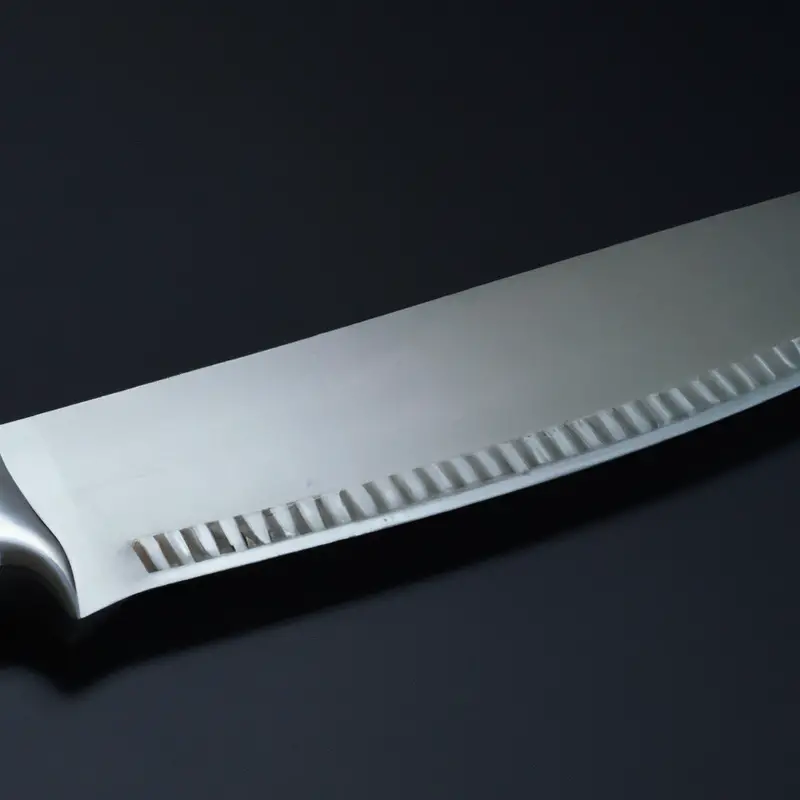
Step-by-step process for rolling and securing a Santoku knife in a knife roll
Step-by-step process for rolling and securing a Santoku knife in a knife roll:
- Gather your Santoku knife and a knife roll.
- Lay the knife roll flat on a clean and dry surface.
- Place the Santoku knife perpendicular to the top edge of the open roll, with the blade facing down and the handle sticking out.
- Fold the top flap of the knife roll over the blade of the Santoku knife.
- Fold the left and right flaps of the knife roll towards the middle, making sure the blade is completely covered and secure.
- Fold the bottom flap of the knife roll over the knife and the other flaps to secure everything in place.
- Roll the knife roll tightly and secure it with the straps or buckles provided by the manufacturer.
- Store the knife roll in a safe and dry place, away from children and pets.
Make sure to follow these steps carefully to ensure the safety of yourself and others when transporting or storing the Santoku knife in a knife roll.
Tips for maintaining the sharpness and quality of a Santoku knife while rolling and securing it
Maintaining the sharpness and quality of a Santoku knife is crucial for efficient cutting and longevity. Here are some tips to help you maintain your Santoku knife while rolling and securing it in a knife roll.
- Clean the knife thoroughly before rolling it in a knife roll. Any food particles or debris left on the blade can cause rust and corrosion over time.
- Use a knife guard or sheath to protect the blade while rolling and securing it. Knife guards and sheaths help prevent the knife from getting scratched or damaged while in a knife roll.
- Avoid overcrowding the knife roll. Overcrowding can cause the knives to rub against each other, resulting in dull or damaged blades.
- Sharpen your Santoku knife regularly. A sharp knife requires less force to cut, reducing the risk of accidents and injuries.
- Use a honing steel to keep the edge of the blade straight between sharpening. A honing steel helps keep the edge aligned, maintaining the sharpness of the blade.
By following these tips, you can maintain the sharpness and quality of your Santoku knife while rolling and securing it in a knife roll.
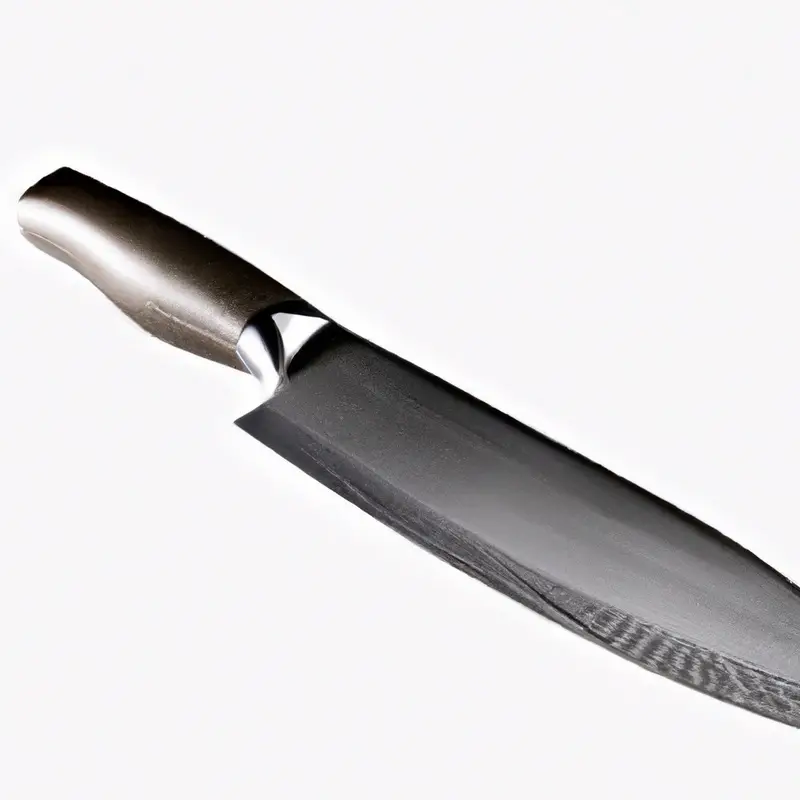
Different types of knife rolls available in the market and how to choose the right one for a Santoku knife
When it comes to choosing a knife roll for a Santoku knife, there are different types of options available in the market. Here are some of the most common ones:
- Leather Knife Rolls: These are the most common and traditional knife rolls. They are popular among chefs and culinary enthusiasts who prefer a classic and elegant design. Leather knife rolls often have a sturdy buckle or clasp that keeps the knives secured inside.
- Canvas Knife Rolls: Canvas knife rolls are lightweight and easy to clean. They come in different sizes and designs, making them perfect for those who want a customizable option. Canvas knife rolls usually have pockets or slots for each knife, allowing for easy organization.
- Hard-Shell Knife Cases: Hard-shell knife cases provide the most protection for your knives. They are made of durable materials such as ABS plastic or aluminum and have foam inserts that keep the knives securely in place. Hard-shell knife cases are ideal for those who travel frequently with their knives.
When choosing a knife roll for a Santoku knife, consider the size of the blade and the number of knives you want to carry. Look for a roll that has enough space and properly-sized pockets or slots for your Santoku knife.
Additionally, consider the material and durability of the roll to ensure that it provides adequate protection for your knife during transportation.
Benefits of rolling and securing a Santoku knife in a knife roll for chefs, cooks, and culinary enthusiasts
Rolling and securing a Santoku knife in a knife roll provides several benefits for chefs, cooks, and culinary enthusiasts. Here are some of them:
- Portability: A knife roll makes it easier to transport a Santoku knife from one place to another. It saves space and provides a safe and organized way of carrying the knife.
- Protection: Rolling and securing a Santoku knife in a knife roll protects the blade from damage, keeping it sharp and extending its life.
- Organization: A knife roll helps keep the Santoku knife and other kitchen tools organized and easily accessible. It also prevents the knife from getting lost or mixed up with other utensils.
- Professionalism: Using a knife roll and properly securing a Santoku knife demonstrates professionalism and care in the culinary field. It shows that the user takes pride in their tools and understands the importance of proper care and maintenance.
- Versatility: A knife roll can hold multiple knives of varying sizes, making it a versatile tool that can be used for various cooking situations.
Overall, rolling and securing a Santoku knife in a knife roll is a practical and beneficial practice for chefs, cooks, and culinary enthusiasts. It provides ease, protection, organization, professionalism, and versatility.
Precautions to take while rolling and securing a Santoku knife in a knife roll to avoid accidents and injuries
To avoid accidents and injuries, it is important to take precautions when rolling and securing a Santoku knife in a knife roll. Here are some essential precautions to follow:
- Keep the blade facing away from you while rolling and securing the knife.
- Make sure the knife is fully closed before rolling it.
- Secure the knife tightly in the roll to prevent it from moving around.
- Place the knife roll in a safe location during transportation to avoid dropping or bumping it.
- Always use caution when handling a knife, even when it is secured in a knife roll.
By following these precautions, you can minimize the risk of accidents and injuries while rolling and securing a Santoku knife in a knife roll.
How to organize other kitchen tools and equipment alongside a Santoku knife in a knife roll
To organize other kitchen tools and equipment alongside a Santoku knife in a knife roll, you can use the following steps:
- Determine the size of the knife roll and the number of pockets available.
- Choose other tools and equipment that are of similar size and shape to the Santoku knife, such as a paring knife or a honing rod.
- Place them in the pockets in an organized manner, based on frequency of use or type of tool.
- Use additional pockets for smaller items such as measuring spoons or a thermometer.
- Make sure all items are secured properly in the pockets to avoid damage and to prevent them from falling out during transportation.
- Consider adding a business card or label to the knife roll to help identify the contents and prevent mix-ups.
Proper organization of other tools and equipment in a knife roll is essential for efficient and safe transportation. It also helps to keep everything in one place, reducing the risk of losing a crucial tool during a busy day in the kitchen.
The importance of proper storage and transportation of a Santoku knife in a knife roll
Proper storage and transportation of a Santoku knife in a knife roll is essential for maintaining its sharpness and quality. The knife’s blade can get damaged or dull if it rubs against other kitchen tools while in storage or during transport.
Moreover, securely rolling and fastening the knife in a knife roll ensures that it doesn’t accidentally fall out and cause potential injuries.
Therefore, it is crucial to invest in a good quality knife roll and practice caution while handling the knife to avoid any accidents.
Final Verdict
Learning how to roll and secure a Santoku knife in a knife roll is crucial for chefs, cooks, and culinary enthusiasts. By following the step-by-step process and using essential tools and materials, you can ensure the sharpness and quality of your knife while organizing it alongside other kitchen tools.
It’s essential to choose the right knife roll and take precautions to avoid any accidents or injuries.
Proper storage and transportation of your Santoku knife in a knife roll will prolong its lifespan, making it a valuable investment for your culinary pursuits. By implementing these tips and takeaways, you can enhance your skills and expertise while building a strong foundation for your kitchen setup.
Remember, a well-maintained Santoku knife is a reflection of your commitment to excellence in cooking.

